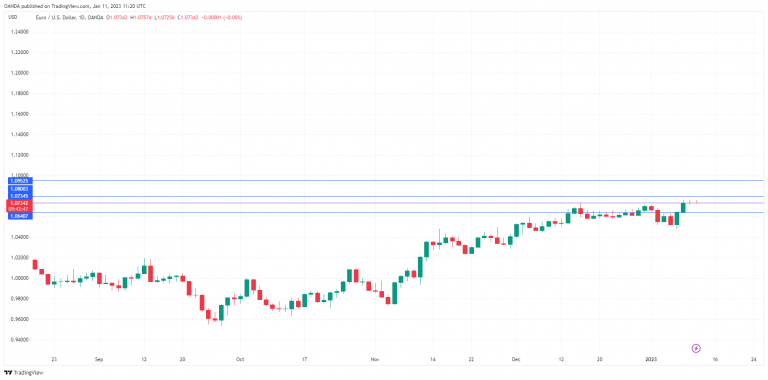The euro is drifting on Wednesday, trading at 1.0730. EUR/USD has climbed about 1% this week, and Monday’s high of 1.0760 is its highest level since Jun. 22. Can the euro continue to push higher?
ECB Unlikely to Change Aggressive Stance
Eurozone inflation has fallen back into single digits, raising hopes that inflation may have finally peaked. The headline rate slowed to 9.2% in December, down from 10.1% in November and beating the forecast of 9.7%. The slowdown is welcome news for the ECB. Still, investors shouldn’t count on the central bank becoming dovish and ending its current rate-tightening cycle, even if inflation continues its downturn in the coming months.
The drop in headline inflation has been fuelled by energy subsidies by governments in Germany and other eurozone members, as well as lower energy prices. Core inflation rose to 5.2% in December, up from 5.0% in November, which indicates that underlying price pressures remain strong.
The ECB is unlikely to ease its pace of hikes until the core rate shows a sustained fall and a drop in wage growth. In the meantime, the ECB’s message remains hawkish. ECB President Lagarde said in December that the markets were underestimating how high rates would go and noted that the ECB was likely to continue raising rates in 50-bp increments “for some time.”
The US releases December CPI on Thursday, and we’ve seen how inflation reports can move the equity and currency markets in recent months. The consensus for headline inflation stands at 6.5%, following the November gain of 7.1%. The core rate is also expected to ease, with a forecast of 5.7% in December, compared to 6.0% in November.
In recent months, soft inflation reports have sent the US dollar lower, as the markets have assumed that the Fed will not be able to continue hiking in the face of falling inflation. I would expect a similar reaction if December’s inflation numbers are lower than expected.
EUR/USD Technical
- EUR/USD has support at 1.0711 and 1.0612
- There is resistance at 1.0800 and 1.0953


